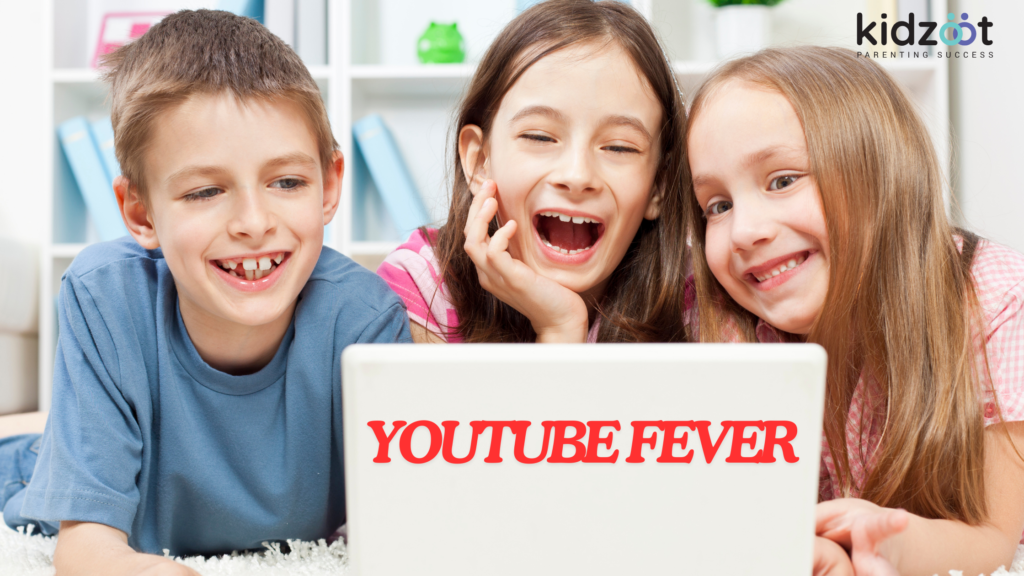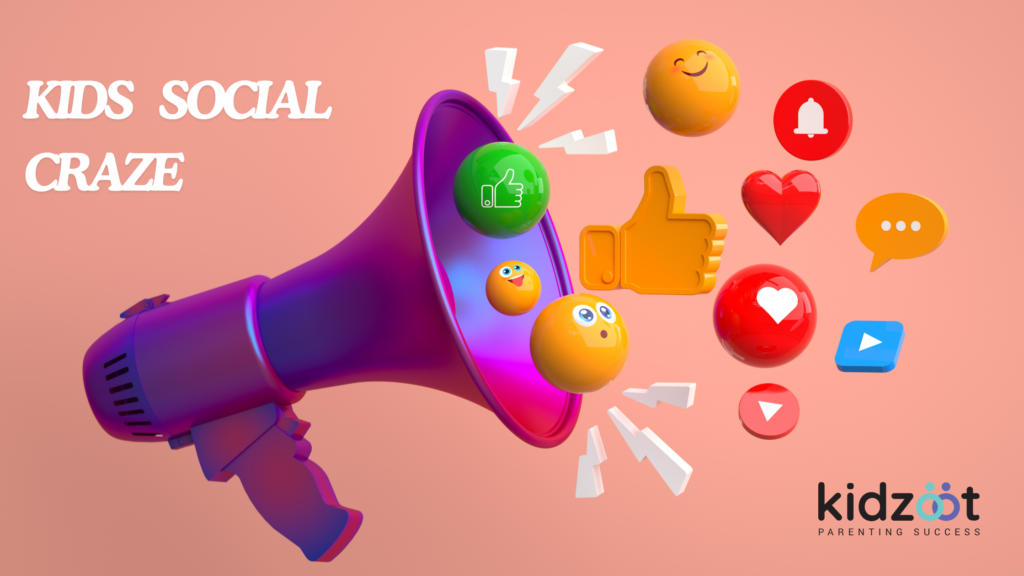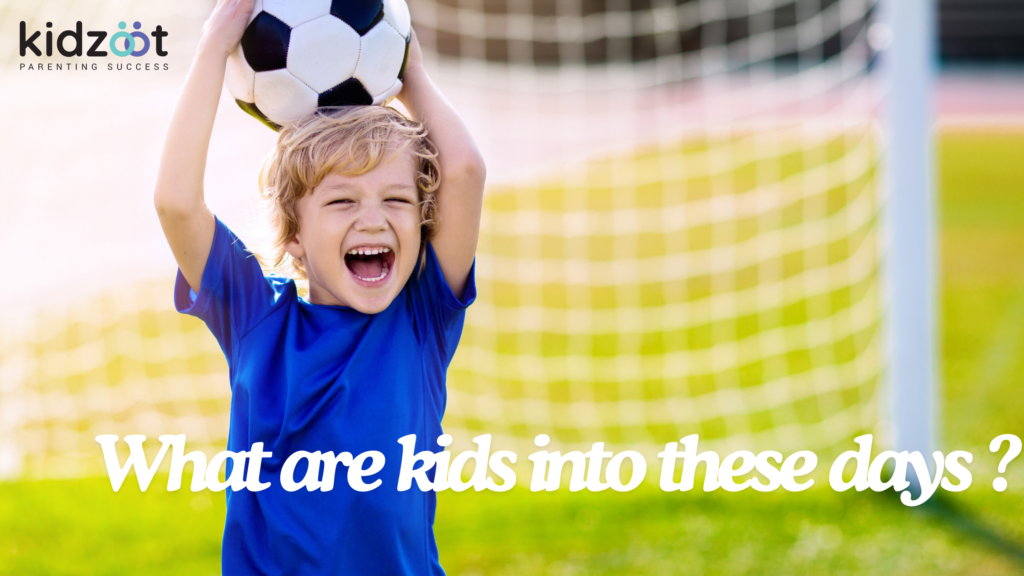Introduction

YouTube and Video Content
One of the biggest things kids are into these days is watching video content on platforms like YouTube. With easy access to smartphones, tablets, and computers, kids can pull up entertaining videos anytime, anywhere. Popular YouTube creators like Ryan’s World have amassed huge followings by posting videos of themselves opening toys, playing games, and doing science experiments. Kids are drawn to the engaging, fast-paced nature of these videos and enjoy following along with their favorite creators on a regular basis. According to statistics, the average American child between the ages of 8-12 watches almost 3 hours of online videos per day.
YouTube is also a top destination for kids interested in gaming content like Minecraft and Roblox tutorials and walkthroughs. Watching others play provides entertainment and inspiration for their own gaming. Music videos and challenges also perform very well on YouTube, with kids eager to learn the latest dance trends or see if their favorite celebrities will complete difficult tasks. The interactive, social nature of YouTube allows kids to leave comments and feel connected to their favorite creators. For better or worse, it’s clear that online video consumption has become a huge part of kids’ daily media diets and free time activities.

While younger kids under 13 are technically not allowed on mainstream social media sites like Instagram, Facebook, Snapchat, and TikTok due to age restrictions, many do still find their way onto these platforms. According to surveys, over 50% of 10-12 year olds have at least one social media profile. Instagram remains one of the most popular networks for preteens and allows them to follow their favorite celebrities, share photos and videos with friends, and keep up with the latest trends.
Sites like Musical.ly (now TikTok) and Snapchat have also found huge popularity among tweens and younger teens due to their focus on sharing short-form video and photo content. On TikTok, creating and watching lip-sync, dance, and comedy videos is all the rage. Kids enjoy following trends, participating in viral challenges, and seeing what their friends are up to. The ephemeral nature of Snapchat stories also appeals to this age group who want to share moments from their daily lives without the content remaining on their profiles permanently.
Even younger elementary school aged kids are getting in on the social media trend through sites tailored specifically for their age group like Roblox, which combines gaming with a social platform. On Roblox, kids can play user-created games together while also customizing avatars and chatting. Clearly social networking and following peers is a huge draw for kids today, even if they’re technically too young for many mainstream platforms. Staying connected with friends digitally has become a daily habit for most.

Gaming
Gaming continues to be one of the biggest activities kids are into today across all ages and demographics. Whether it’s playing on consoles, mobile devices, or computers, gaming provides endless entertainment and engagement for kids. Franchises like Minecraft have taken the world by storm by allowing creative exploration and multiplayer fun in an open world. With over 200 million copies sold, Minecraft is still one of the best-selling video games of all time and appeals widely to both boys and girls.
Roblox has also skyrocketed in popularity by giving players the ability to not only play a wide variety of user-generated games but also learn basic coding skills. With over 30 million daily active users, Roblox has become the most popular gaming platform for kids under 13. Mobile gaming has also surged, thanks to easy-to-pick-up titles like Candy Crush Saga and games based on popular kids’ franchises that can be enjoyed in short bursts. Pokémon Go brought augmented reality gaming into the mainstream and still remains a popular outdoor activity for many families.
Esports and competitive gaming are also on the rise among older kids and teens. Watching livestreams and tournaments of games like Fortnite, League of Legends, and Overwatch has become a huge entertainment genre. Some kids even dream of becoming the next gaming superstar by making a career out of competitive gaming. With cross-platform play now common, gaming provides a social experience kids can enjoy with their friends anytime from any device. It’s clear gaming in its many forms will continue captivating kids for years to come.

Creative Pursuits
While screen time dominates much of kids’ free hours, many still find enjoyment in traditional creative and artistic hobbies. Activities like drawing, painting, and crafts allow kids’ imaginations to shine through. With the rise of YouTube and Instagram, many kids even aspire to become famous artists or YouTube stars by sharing their creations online. Popular kids’ art brands like Crayola and Melissa & Doug continue innovating new craft and activity kits to fuel kids’ creativity both on and offline.
Music and dance remain hugely popular ways for kids to express themselves. Many dream of performing or becoming the next big pop star. Learning an instrument is still a common extracurricular activity for both enjoyment and building discipline. Dance trends spread rapidly on social media platforms, and kids love learning the latest viral routines. Attending dance classes provides social fun and exercise.
Nature and the outdoors also continue to appeal to many kids. Activities like hiking, camping, and exploring in local parks help foster an appreciation for the natural world. Outdoor sports remain a mainstay, whether it’s soccer, baseball, basketball or others. Some kids prefer more solitary pastimes like reading, writing, puzzles or collecting items related to their favorite interests. The options are endless for channeling young minds’ creative energies.
 Influencer Fever
Influencer Fever
The phenomenon of “influencer fever” among children has been growing rapidly in recent years, with an increasing number of young people aspiring to become social media influencers. This trend has been fueled by the widespread use of smartphones, easy access to social media platforms, and the glamorization of the influencer lifestyle.
According to a 2023 survey by Common Sense Media, approximately 54% of children aged 8-12 expressed a desire to become social media influencers when they grow up, up from 37% in 2019. This significant increase highlights the growing allure of influencer culture among the younger generation.
The appeal of becoming an influencer is multifaceted. Children are attracted to the perceived fame, financial rewards, and lifestyle benefits associated with successful influencers. A 2024 report by the Pew Research Center found that 68% of teenagers believe being an influencer is a viable career option, with potential earnings and brand deals being major motivating factors.
However, this trend has raised concerns among parents, educators, and child psychologists. The pressure to maintain a perfect online image, coupled with the constant need for validation through likes and followers, can negatively impact children’s mental health and self-esteem. A study published in the Journal of Adolescent Health in 2023 revealed that children who actively pursue influencer status are 35% more likely to experience symptoms of anxiety and depression compared to their peers.
The influencer fever has also led to changes in children’s behavior and priorities. Many young aspiring influencers spend a significant amount of time creating content, often at the expense of traditional childhood activities and academic pursuits. A 2024 survey by the National Education Association found that 42% of teachers reported a noticeable decrease in students’ attention spans and engagement in class, which they attributed partly to social media use and influencer aspirations.
Parents are increasingly finding themselves in a difficult position, trying to balance their children’s interests with concerns about online safety and healthy development. A 2023 survey by ParentsTogether showed that 73% of parents worry about their children’s obsession with becoming influencers, while 58% admitted to helping their children create content for social media platforms.
In response to these trends, schools and organizations have begun implementing digital literacy programs that address the realities of influencer culture. These programs aim to educate children about the potential risks and responsibilities associated with online fame, as well as promote a balanced approach to social media use.
The influencer marketing industry has also recognized the need for ethical guidelines when working with young content creators. In 2023, the Influencer Marketing Hub, in collaboration with UNICEF, released a set of best practices for brands and platforms to ensure the protection of children’s rights and well-being in influencer marketing campaigns.
Despite the concerns, some experts argue that the influencer trend can have positive aspects if managed responsibly. It can foster creativity, entrepreneurship, and digital skills that may be valuable in future careers. A 2024 study by Stanford University found that children who engage in content creation develop better communication skills and digital literacy compared to their non-creating peers.
As the influencer landscape continues to evolve, it’s clear that this phenomenon will remain a significant part of children’s lives in the near future. The challenge for society will be to guide young people toward a healthy relationship with social media and online fame, while also preparing them for the realities of a rapidly changing digital world.
In conclusion, while screens and technology dominate much of kids’ leisure time in today’s digital age, it’s clear that children still crave opportunities for social interaction, creative expression, physical activity, and exploration of interests both online and offline. A balanced mix of screen time and traditional activities is ideal for healthy development. Some trends like gaming and social media seem here to stay, while others like specific video platforms may come and go. Overall, kids will always be drawn to fun new trends and discovering their individual talents and passions. The variety of options available today means children have more freedom than ever to develop in the ways that most interest and inspire them.
![Picture of Abhishek Sonkar [Author]](https://kidzoot.com/wp-content/uploads/2023/07/Front-photo-for-Website-300x300.webp)
Abhishek Sonkar [Author]
Meet Abhishek Sonkar, [B.com, B.Ed., M.Ed.], a child development specialist with years of experience in the field. He has written numerous blog posts on child development and parenting.
Frequently Asked Questions
Young kids this age enjoy pretend play, arts & crafts, reading, outdoor activities, basic games on tablets/phones, watching videos on YouTube for Kids.
This age group is drawn to gaming like Roblox, Minecraft, sports, collecting items related to interests like Pokémon, watching YouTube, playing on social apps tailored for their age.
Tweens at this stage want more independence and enjoy social media, gaming, music/videos, crafts, reading, outdoor activities/sports with friends. Mobile games are very popular.
Teens this age are into social media, gaming, music/videos, movies/TV shows, fashion/style, hanging out with friends both online and off. They start to discover individual interests.
Older teens at this point want to spend more time with friends, are drawn to social causes, fashion/style, music/concerts, movies/TV shows, gaming, social media to connect with peers and explore identities.
FOR MORE VALUABLE TIPS BUY OUR PARENTING COURSES https://www.kidzoot.com/courses/
CONSULT YOUR PERSONAL PARENTING SOLUTIONS VIA APPOINTINTMENT AT https://www.kidzoot.com/appointment-booking/
Follow Us on Twitter www.twitter.com/kidzootworld

